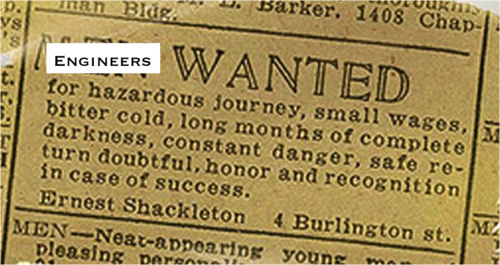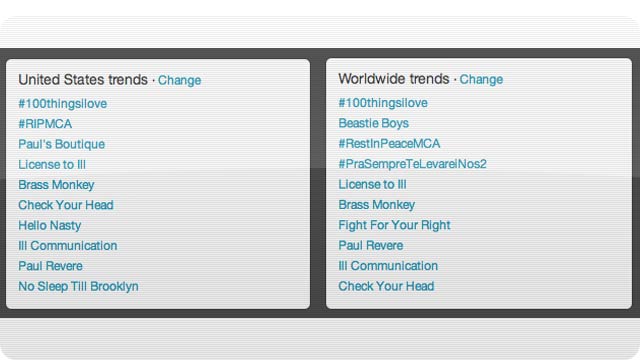Priceonomics just raised $1.5 MM in seed funding. Raising seed capital isn’t a triumph by any measure, but we’re enormously grateful we get the opportunity to build something we love. We get to go on the journey to build the definitive price resource so that no one gets ripped off ever again.
We raised the money from SV Angel, Spark Capital, Andreessen Horowitz, CrunchFund, Crosslink Capital, Y Combinator partners, Michael Ovitz, top angels like Joshua Schachter, and early Google engineers. TechCrunch has the full announcement here.
It’s a little awkward announcing our funding, because what’s the point really? None of our users noticed when the money hit our bank account. We decided this announcement could be useful for two audiences:
- Engineers who want to join our team, or
- Other entrepreneurs who could benefit from our observations from raising money for the first time (or at least find it interesting)
So, here we go - a quick note to engineers and then our experience raising money for the first time.
Quick Note to Engineers and Hackers: If the idea of algorithmically cataloging every washing machine ever made and then determining their fair market price appeals to you, join us! We are a happy clan that relentlessly structures data and makes information digestible.

We’re hiring! Email omar@priceonomics.com or check out our jobs page.
Onward, what we learned raising money
To entrepreneurs and startup voyeurs, here’s what we learned raising money for the first time. We’re trying not to present any advice, but instead just present some observations from our limited and idiosyncratic experience.
1. We tried to follow Y Combinator’s advice to minimize time fundraising and get back to work. Our goal was not to die from lack of funding or die from losing focus on the product. All $1.5 MM was committed within 10 days of YC demo day. Once we hit that number, we got back to work on the product. When we were fundraising, it was actually hard to work on the product.
2. Commitments are important, but money in the bank is better. Logistically, there are still a lot of steps from a verbal yes to money in the bank. One of our co-founders (Michael) was designated “the closer” to make sure the deals formally closed and he dominated that role.
3. The first money is important. It seems unlikely anyone will give you any money until someone actually gives you money. If we noticed any hack in raising money, it is get someone to give you money first. SV Angel was the first investor we talked to and they offered to invest and set the basic terms. They were enormously helpful and we’ll always remember how important they were for us.
4. Our legal bill was $0. We used the standard YC documents and the platform clerky.com to handle all the paperwork. We also leaned heavily on YC’s in-house lawyer, Jon Levy. Thank you Jon!
5. Even when you’re able to raise money from awesome investors, it still feels like you’re failing. For every Andreessen Horowitz that tells you they want to invest, 3 investors give you the cold shoulder that same day. We raised $1.5 million in 10 days and pretty much the whole time we didn’t feel very good.
6. Inbound leads close, outbound leads don’t. Almost all investors participating in our round round contacted us or requested an introduction to us. Conversely, when someone told us, “Oh, you have to meet Investor X”, Investor X typically didn’t seem that interested in meeting us unless it was their idea originally. If there’s a second hack in the process, it’s to generate inbound interest in your company (which is a difficult hack to figure out).
7. ~$500,000 of the capital we raised were from people who cold-emailed us at “info@priceonomics.com.” Check your company’s public-facing email address!
8. Very few investors tell you “no”. Overwhelmingly, they just never email you back, even after they were the ones initiating the conversation. If they do tell you no, their reasons are often weird or cryptic.
9. People who invested in our round told us yes very quickly. No one who stalled on deciding ever came back with a yes. Investors that were engineers decided particularly quickly. On the other end of the spectrum were VC funds (except the ones that invested in our round, we love you guys!).
10. Deadlines and scarcity helps close investors. One of the biggest benefits of YC Demo Day is you get to simultaneously talk to many different investors who know they could miss out on the deal if they don’t decide quickly. If the process of talking to investors was purely sequential, it seems like they’d all just want to be the last investor you talked to.

After we got funding, we went a little bit nuts with the expenses.
Finally, an enormous thank you to the partners and staff at Y Combinator. It’s impossible to overstate how hard they worked directly on our behalf and how earnest they are about doing the right thing for their companies. The program lets you spend nearly 100% of your time working on the product, and then at the end creates inbound interest from investors for your company. Among the reasons this works is because everyone at Y Combinator puts so much effort into pulling it off.
It’s hard to go through Y Combinator and not feel optimistic about the human race. It’s also hard to not feel like you have a lot of work to do.
So, that’s where we are. Back to work.
We are hiring engineers. Comment on this post on Hacker News.
This post was written by Rohin Dhar. Follow him on Twitter here. Get the latest from Priceonomics on Facebook or Twitter.









